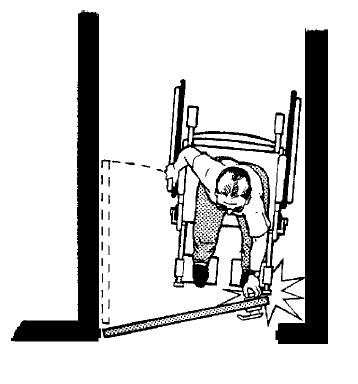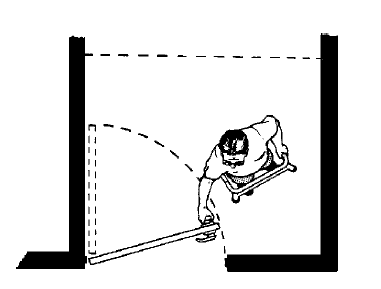Withdrawn Technical Assistance: Common ADA Errors and Omissions in New Construction and Alterations
Doors
Error/Omission:
Adequate maneuvering clearance is not provided at doors, including doors to accessible toilet stalls.
Result:
A person using a wheelchair cannot open the door without a clear level area in front of and adjacent to the door that provides a place to maneuver.

Requirement:
4.13.6 Maneuvering Clearances at Doors. Minimum maneuvering clearances at doors that are not automatic or power-assisted shall be as shown in Fig. 25. The floor or ground area within the required clearances shall be level and clear.
4.17.5* Doors. Toilet stall doors, including door hardware, shall comply with 4.13. If toilet stall approach is from the latch side of the stall door, clearance between the door side of the stall and any obstruction may be reduced to a minimum of 42 in (1065 mm) (Fig. 30).

* Asterisk denotes that related, non-mandatory material is in the Appendix to the Standards.
Doors
Error/Omission:
The shape of the door hardware requires tight grasping, pinching, and twisting of the wrist to use.
Result:
The door cannot be opened if the user cannot operate the latch or handle.
Requirement:
4.13.9* Door Hardware. Handles, pulls, latches, locks, and other operating devices on accessible doors shall have a shape that is easy to grasp with one hand and does not require tight grasping, tight pinching, or twisting of the wrist to operate. Lever-operated mechanisms, push-type mechanisms, and U-shaped handles are acceptable designs. When sliding doors are fully open, operating hardware shall be exposed and usable from both sides. Hardware required for accessible door passage shall be mounted no higher than 48 in (1220 mm) above finished floor.

* Asterisk denotes that related, non-mandatory material is in the Appendix to the Standards.

User Comments/Questions
Add Comment/Question